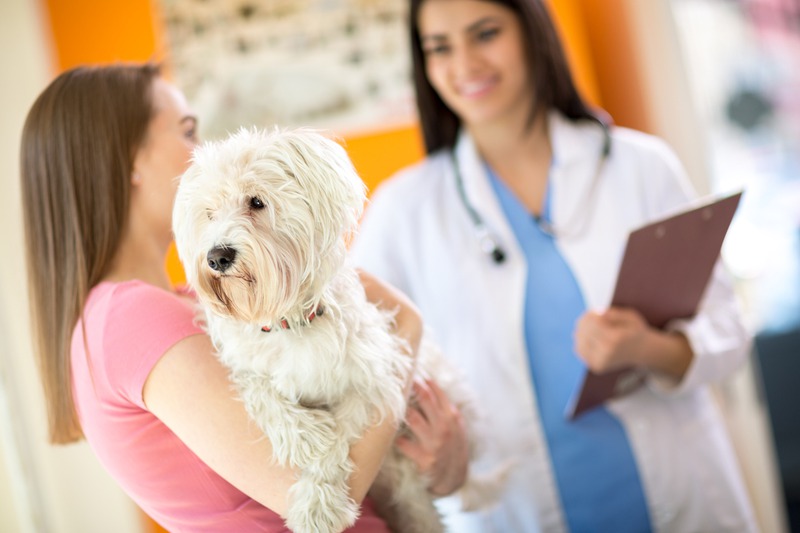Our pets can’t tell us when they’re feeling under the weather. It’s like trying to solve a mystery without the key piece of evidence. But they do communicate in their own ways – through behavior changes. These shifts can range from subtle to startling and knowing what to look for is crucial in maintaining their well-being. It’s about being in tune with the nuances of our furry friends’ routines because sometimes those little signs can indicate bigger health issues calling for a professional check-up. Below, we’ll talk about these behavioral red flags that signal it’s time for a visit to the vet.
Key Behavioral Changes to Watch For
Understanding your pet’s normal behavior is the starting point, as any deviation could be a sign of trouble. So let’s get straight to the point on some behavior changes that should have you reaching for your vet’s number:
-
Changes in Eating and Drinking Habits: A sudden loss of appetite or an unusual increase in thirst can be symptomatic of various health issues, from dental problems to diabetes. If you notice your dog or cat isn’t enthusiastic about meal times anymore, or if they’re drinking water like there’s no tomorrow, it’s time to pay attention.
-
Lethargy or Lack of Energy: If your once playful pup is now a couch potato or your curious cat no longer chases their favorite toy, we’re looking at a potential health issue. When pets are in pain or not feeling well, they often become less active.
-
Unusual Aggression or Irritability: Like us, when pets feel lousy, they can get grumpy. If your furry friend is suddenly growling or snapping when they were once cuddly, it could be their way of saying, “I’m in pain!”
-
Changes in Bathroom Habits: An increase in the number or urgency of bathroom breaks or trouble using the bathroom at all, can suggest anything from a urinary tract infection to kidney disease.
Other Signs to Be Aware Of:
-
Excessive grooming, licking, or biting a particular area could indicate pain or itchiness due to infection.
-
Changes in sleep patterns might mean they’re uncomfortable or unable to settle down.
-
Unexplained weight loss or gain is rarely a good sign and merits a deeper look into their health.
-
Vocalization changes, such as more whining or howling, often mean they’re distressed.
Remember, we’re our pets’ primary caretakers, and it’s up to us to notice when they’re off their game. If you see these changes and they persist for more than a day or two, don’t hesitate to consult your vet. And it’s not always just about illness, sometimes they signify the need for routine health maintenance like their pet vaccinations services.
When Should You Act on These Behavioral Changes?
The rule of thumb is simple: If you notice any of the above changes and they’re out of character for your pet, it’s better to err on the side of caution. Acute, obvious changes require immediate attention, but even subtle shifts over time should prompt a vet visit. Here’s when you should take action:
-
Immediate Behavioral Changes: If your pet shows sudden and severe symptoms, such as extreme lethargy, uncontrolled vomiting, or seizures, you need to act fast. These can be signs of serious conditions that need immediate medical attention.
-
Gradual Behavioral Changes: Gradual changes can be tricky. It’s easy to chalk up a small difference to your pet just having an off day. However, if you observe a consistent pattern over a few days, or if the change is getting progressively worse, it’s time to make that vet appointment.
-
In Case of Emergency: Some behavioral changes are emergencies in disguise. Difficulty breathing, collapse, or profuse bleeding are obvious red flags. However, severe gastrointestinal issues or sudden blindness can also be emergencies, even if your pet seems calm. When in doubt, consult your vet immediately.
If you need more clarification about making an appointment, remember that many vets offer advice over the phone. They can let you know if it sounds like something that can wait or if you should bring your pet in right away. For more specialized care, you should click here to learn more about vet surgery.
How Regular Check-Ups Can Help
Regular vet visits are crucial for keeping your pet in tip-top shape. They can catch small issues before they become big ones. For instance, during a routine check-up, a vet might identify the need for a procedure like cat & dog spay in Westminster, MA, which can prevent future health problems.
Benefits of Routine Vet Visits
-
Early detection of chronic diseases or conditions
-
Up-to-date vaccinations that can prevent serious illnesses
-
Professional dental care is important for overall health
-
Weight management and dietary advice to keep pets healthy and active
Monitoring Your Pet’s Health
The more familiar you are with your pet’s habits, the easier it will be to spot when something’s amiss. Keeping a journal or notes on your pet’s behavior can be helpful when talking to the vet. Note changes in appetite, energy levels, and mood. Keeping track can make all the difference.
Final Thoughts
As pet owners, it’s our job to act like detectives when it comes to our pets’ well-being. They rely on us to spot when they’re unwell. Keeping an eye on how they act differently is key. Your pet’s silent signals can tell you a lot about their health.
Remember, if your pet is suddenly tired or has been coughing a lot, it’s time to talk to your vet. It might be worrisome to think your pet is sick, but finding problems early usually means they’ll get better faster. Trust what you feel – you’re the one who knows your pet the best. With your vet’s help, you can make sure your pet stays joyful and in good health for a long time.

